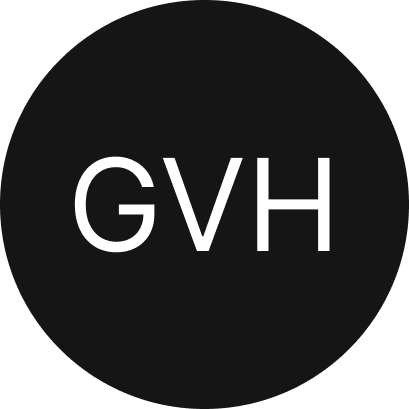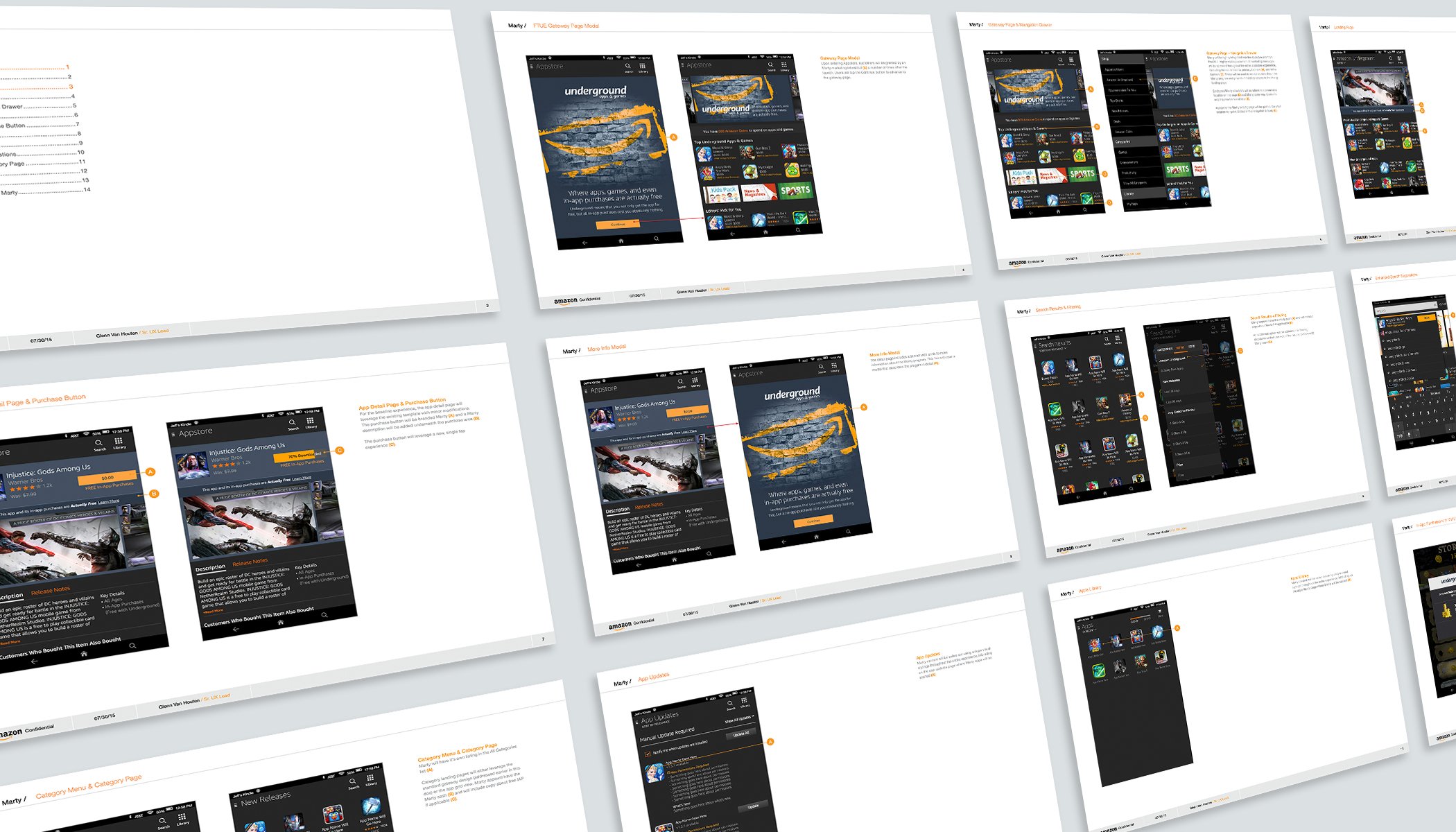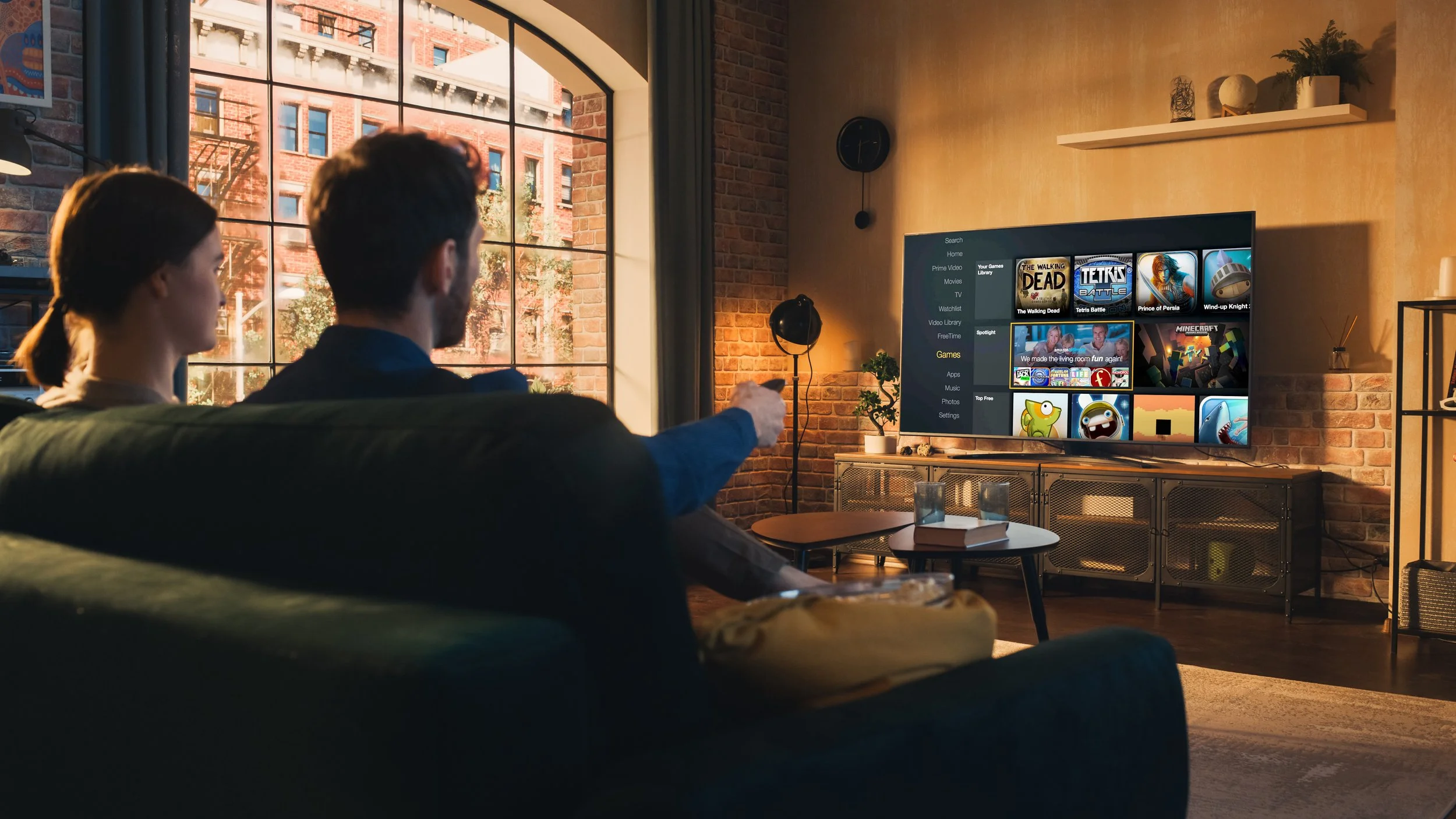
Amazon Underground
CASE STUDY
An Appstore Where Everything is Free
Amazon Underground was developed as a new approach to Appstores. All apps and games were free (think of it like Netflix for apps), and developers were paid for the time customers spent with their apps.
MY ROLE
Design Lead, 1st Party Devices/Branding/Developer Services
TOOLS
Sketch, User Testing, Photoshop, Illustrator, Premier
The Problem
Customers have become so accustomed to apps being free that they’re reluctant to purchase apps that aren’t. At the same time, customers often feel nickel-and-dimed by in-app purchases. App developers, on the other hand need to make money for their efforts.
How could we solve for both at the same time?
The Customers
App Users: Amazon Underground focused on solving the needs of App users on both Amazon’s 1st part devices (primarily the Kindle Fire and Fire TV,) and 3rd party devices (Android devices using our mobile application) by providing an entirely free service where customers could be confident that they were getting the full functionality of an app without ever getting charged.
App Developers: Amazon Underground needed to solve developer needs by minimizing the amount of work necessary to integrate with the service.
Results and Learnings
Google changed their rules to block Underground on 3rd Party Android Devices
A key ingredient in our strategy was a 3rd party Android application that could be installed on any Android device (Amazon Appstore is developed on Android). Google got wind of our application and they swiftly changed their terms of service to block apps that distribute other apps, meaning we had to pivot and rely on less than ideal methods of distributing Underground.
High Engagement Levels on 1st Party Fire Tablets
Amazon Underground was a success on 1st party devices where we were able to build an experience that introduced little-to-no friction to take advantage of the program.
Installing Underground on Android Devices was a Huge Barrier.
Due to Google Play rules against distributing apps that distributed other apps we had to develop methods to teach customers how to side-load the app on their Android device. Ultimately, this hurdle became too big to overcome and Underground was shuttered after a couple of years.
How We Did It
It started with an idea called Amazon Arcade
The original idea for Underground started with something we called Amazon Arcade. The idea was to repurpose our Appstore client into a something that focused specifically on gaming. It would be a single app that contained a virtual arcade where any user, on any platform, could come in and play for free. Games would be streamed to the user so there would be no platform restrictions and each play session would be broadcast through twitch.
Validating with customers
As we worked through iterations of the idea we regularly tested it with internal and external users. Over time we also pivoted the application away from being simply an arcade, making the decision to open it up to any type of app that developers wanted to distribute.
Developing the Brand
The brand went through several iterations, ultimately landing on something with a subversive, yet upbeat feel to it. The branding was heavily influenced by street art and the idea of belonging to something cool that’s also a bit exclusive…”If you know, you know”.
TENETS
BE SPECIAL
Customers should feel like they are part of something exclusive and maybe even a little secretive.
BE EDGY, BUT POSITIVE
We want to push the envelope with the design and give it an edgy feeling, but it needs to maintain a positive vibe.
BE SINCERE AND TRUSTWORTHY
The design should not feel trite and insincere. Even if we push the boundaries on what’s normally acceptable for Amazon, it still needs to feel trustworthy.
BE MINDFUL
Designs should take into account established platform patterns and Amazon voice, while taking steps to validate all design decisions.
Integrating with Fire Tablets
I was responsible for designing all 1st party device experiences. This included Fire Tablet integration across multiple OS versions and marketplaces.
Integrating with Fire TV
I was responsible for designing all 1st party device experiences. This included Fire TV integration across multiple OS versions and marketplaces.
Reworking the Amazon Developer Portal
Completely rethinking app distribution and monetization meant a significant reworking of the existing developer portal. We needed to do it in way that would educate developers about the program while at the same time, requiring the bare minimum effort from them to take advantage of it.





